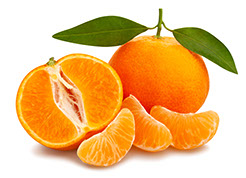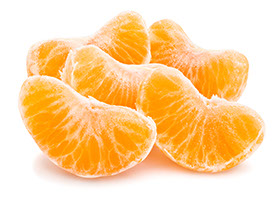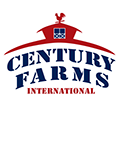
Overview
Varieties
Nutrition Information
Overview
Tangerines
The tangerine (Citrus tangerina) is a group of orange-colored citrus fruit consisting of hybrids of mandarin orange (Citrus reticulata).
The name was first used for fruit coming from Tangier, Morocco, described as a mandarin variety. Under the Tanaka classification system, Citrus tangerina is considered a separate species. Under the Swingle system, tangerines are considered to be a group of mandarin varieties. Genetic study has shown tangerines to be mandarin orange hybrids containing some pomelo DNA. Some differ only in disease resistance. The term is currently applied to any reddish-orange mandarin (and, in some jurisdictions, mandarin-like hybrids, including some tangors).
Tangerines are smaller and less rounded than common oranges. The taste is considered less sour, as well as sweeter and stronger, than that of an orange. A ripe tangerine is firm to slightly soft, heavy for its size, and pebbly-skinned with no deep grooves, as well as orange in color. The peel is very thin, with very little bitter white mesocarp, which makes them usually easier to peel and to split into segments. All of these traits are shared by mandarins generally.
Source: Wikipedia.org

Varieties

Tangerines were first grown and cultivated as a distinct crop in the Americas by a Major Atway in Palatka, Florida. Atway was said to have imported them from Morocco (more specifically its third largest city Tangier), which was the origin of the name. Major Atway sold his groves to N. H. Moragne in 1843, giving the Moragne tangerine the other part of its name.
The Moragne tangerine produced a seedling which became one of the oldest and most popular American varieties, the Dancy tangerine (zipper-skin tangerine, kid-glove orange).Genetic analysis has
shown the parents of the Dancy to have been two mandarin orange hybrids each with a small pomelo contribution, a Ponkan mandarin orange and a second unidentified mandarin. The Dancy is no longer widely commercially grown; it is too delicate to handle and ship well, it is susceptible to Alternaria fungus, and it bears more heavily in alternate years. Dancys are still grown for personal consumption, and many hybrids of the Dancy are grown commercially.
Until the 1970s, the Dancy was the most widely grown tangerine in the US; the popularity of the fruit led to the term "tangerine" being broadly applied as a marketing name. Florida classifies tangerine-like hybrid fruits as tangerines for the purposes of sale and regulation; this classification is widely used but regarded as technically inaccurate in the industry. Among the most important tangerine hybrids of Florida are murcotts, a late-fruiting type of tangor marketed as "honey tangerine" and Sunbursts (an early-fruiting complex tangerine-orange-grapefruit hybrid). The fallglo, also a three-way hybrid (5/8 tangerine, 1/4 orange and 1/8 grapefruit) is also grown.
Source: Wikipedia.org
Nutrition Facts
Tangerines
Amount Per 1 fruit (74 g)
Calories 35
% Daily Value*
Total Fat 0.1 g 0%
Sodium 1 mg 0%
Potassium 131 mg 3%
Total Carbohydrate 9 g 3%
Dietary fiber 1.3 g 5%
Sugar 7 g
Protein 0.6 g 1%
Vitamin C 60% Calcium 2%
Iron 0% Vitamin D 0%
Vitamin B-6 5% Magnesium 1%
*Percent Daily Values are based on a 2,000 calorie diet. Your daily values may be higher or lower depending on your calorie needs.

Century Farms International, Inc.
10957 NW 123rd Street Medley, FL 33178
Office: 305-436-7971 Fax: 305-436-7968



